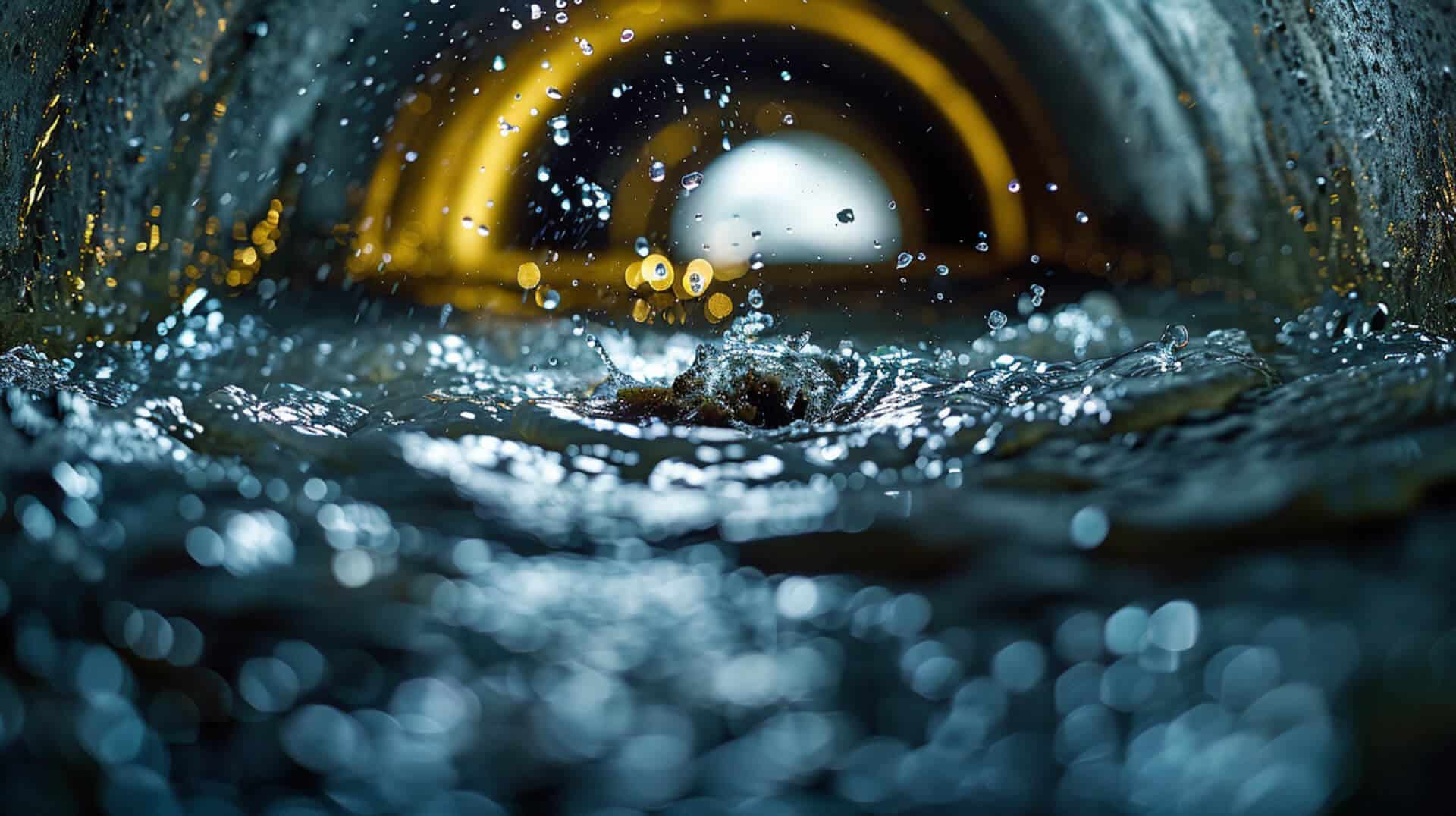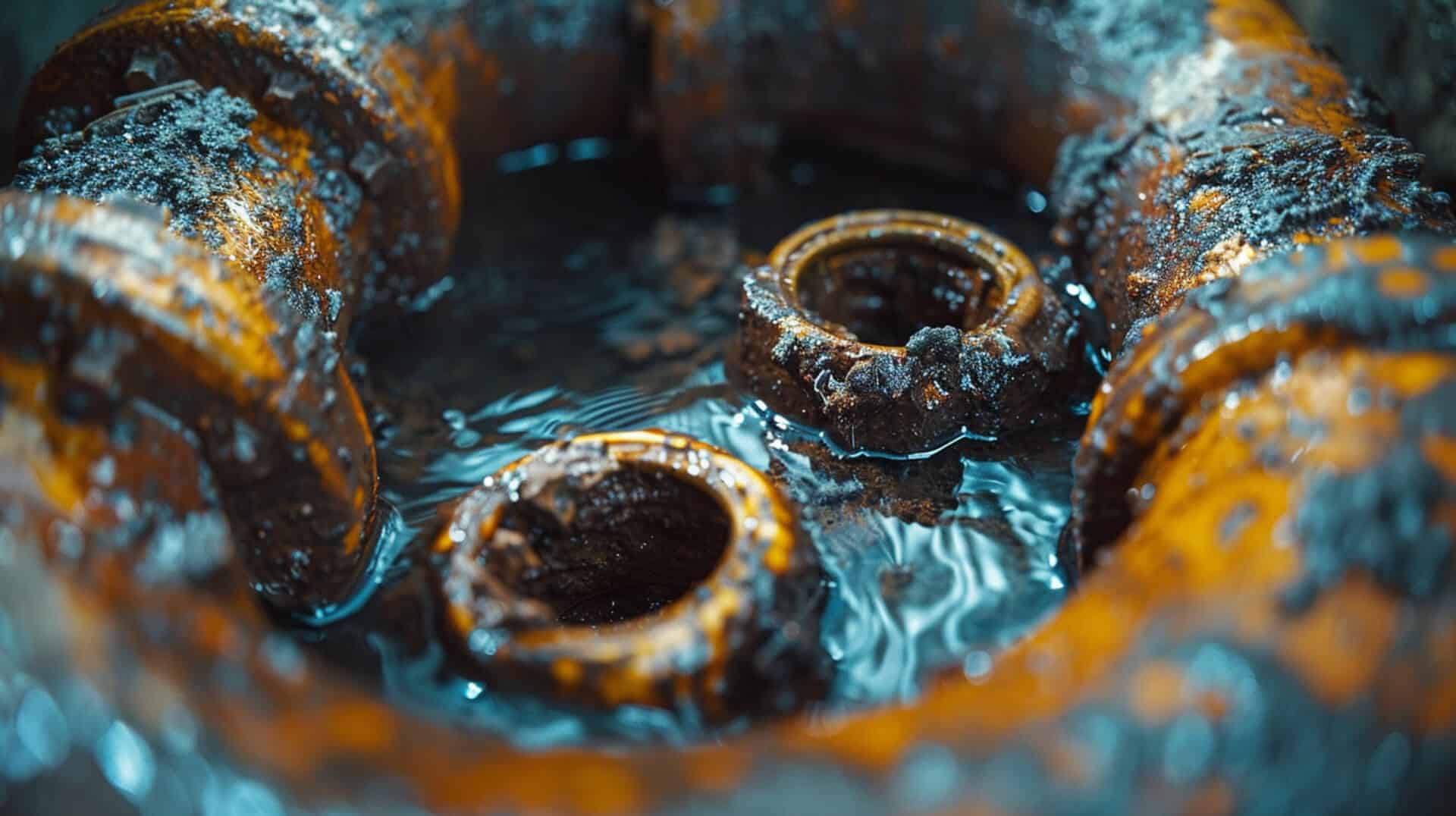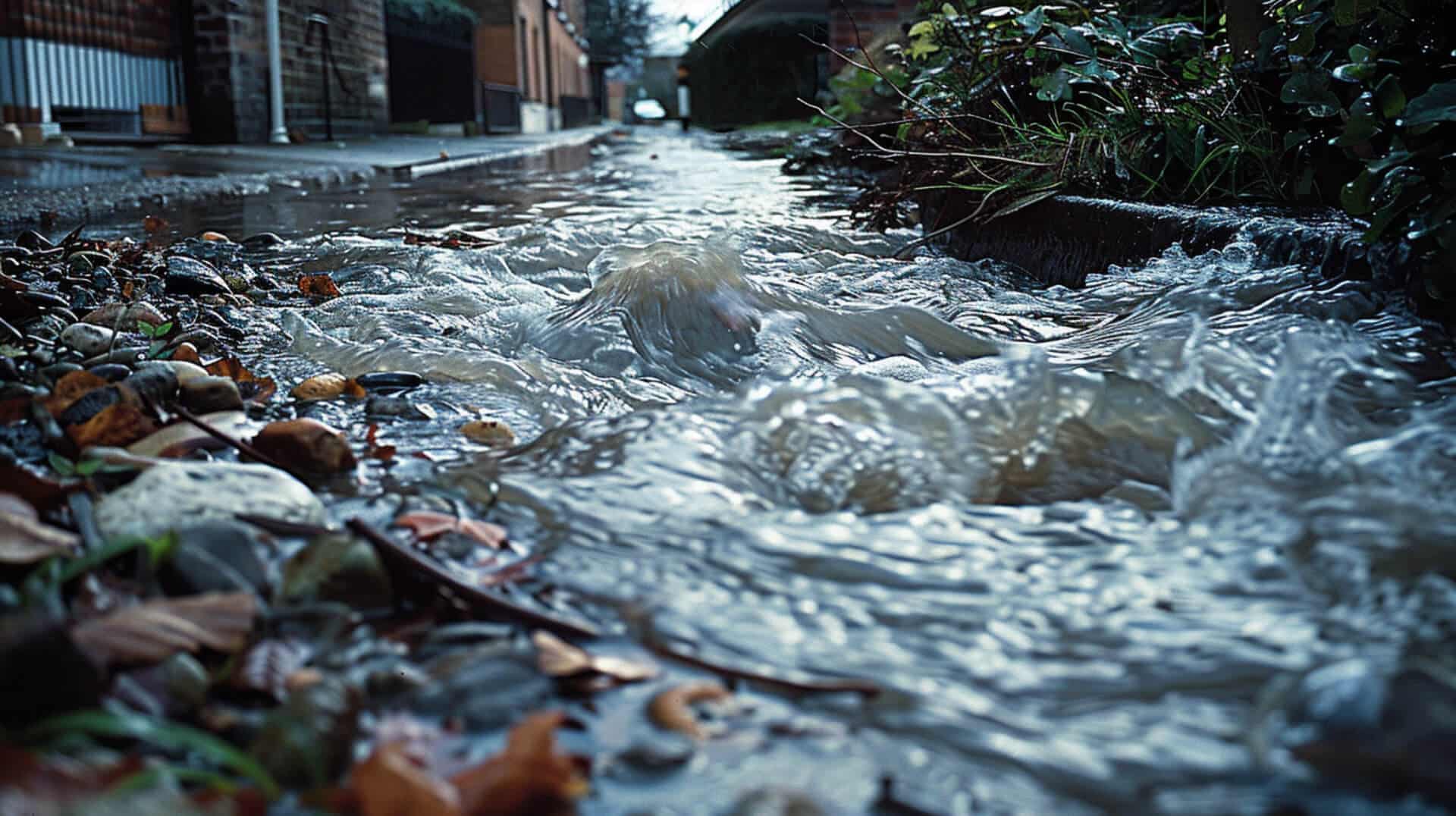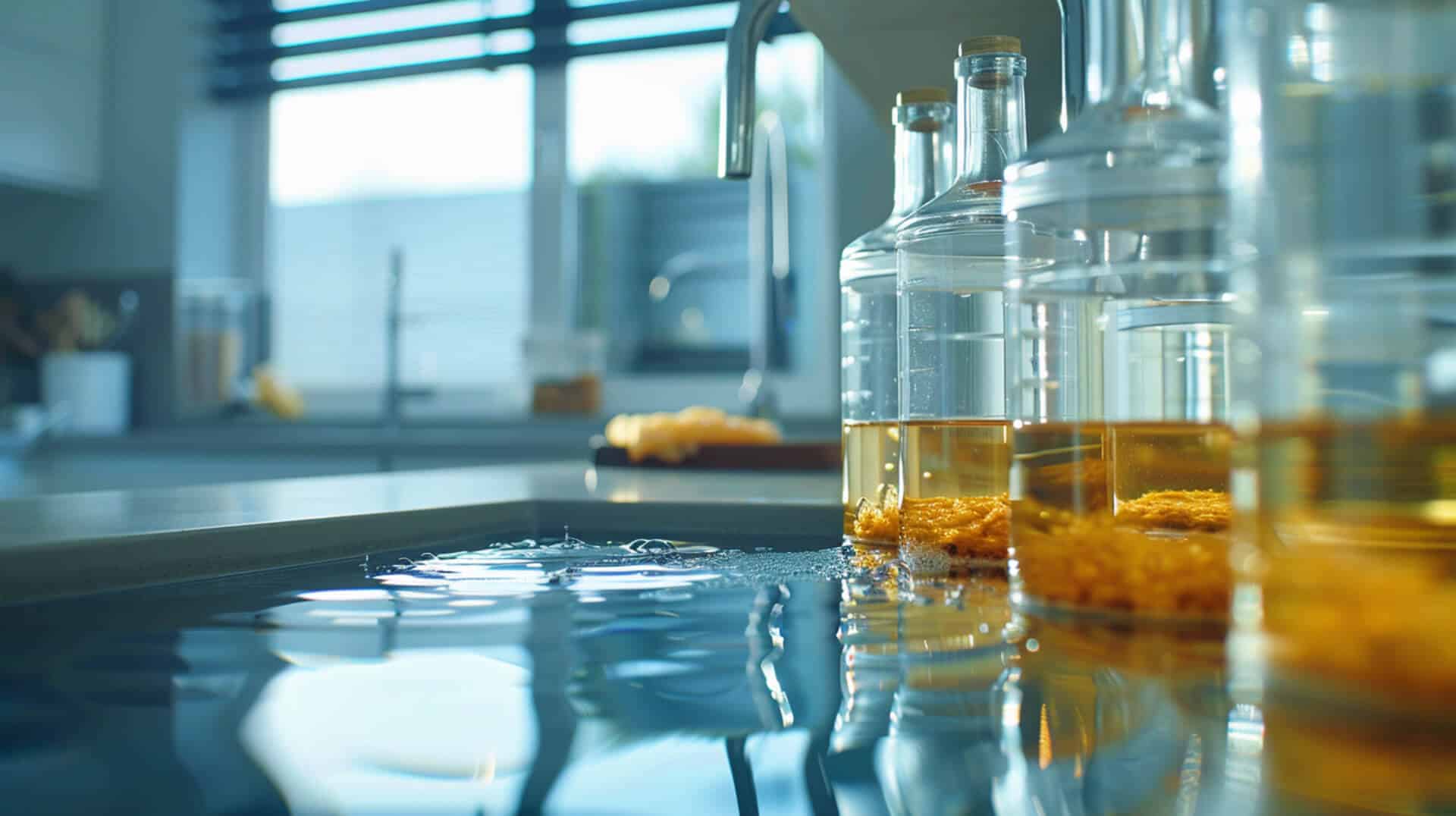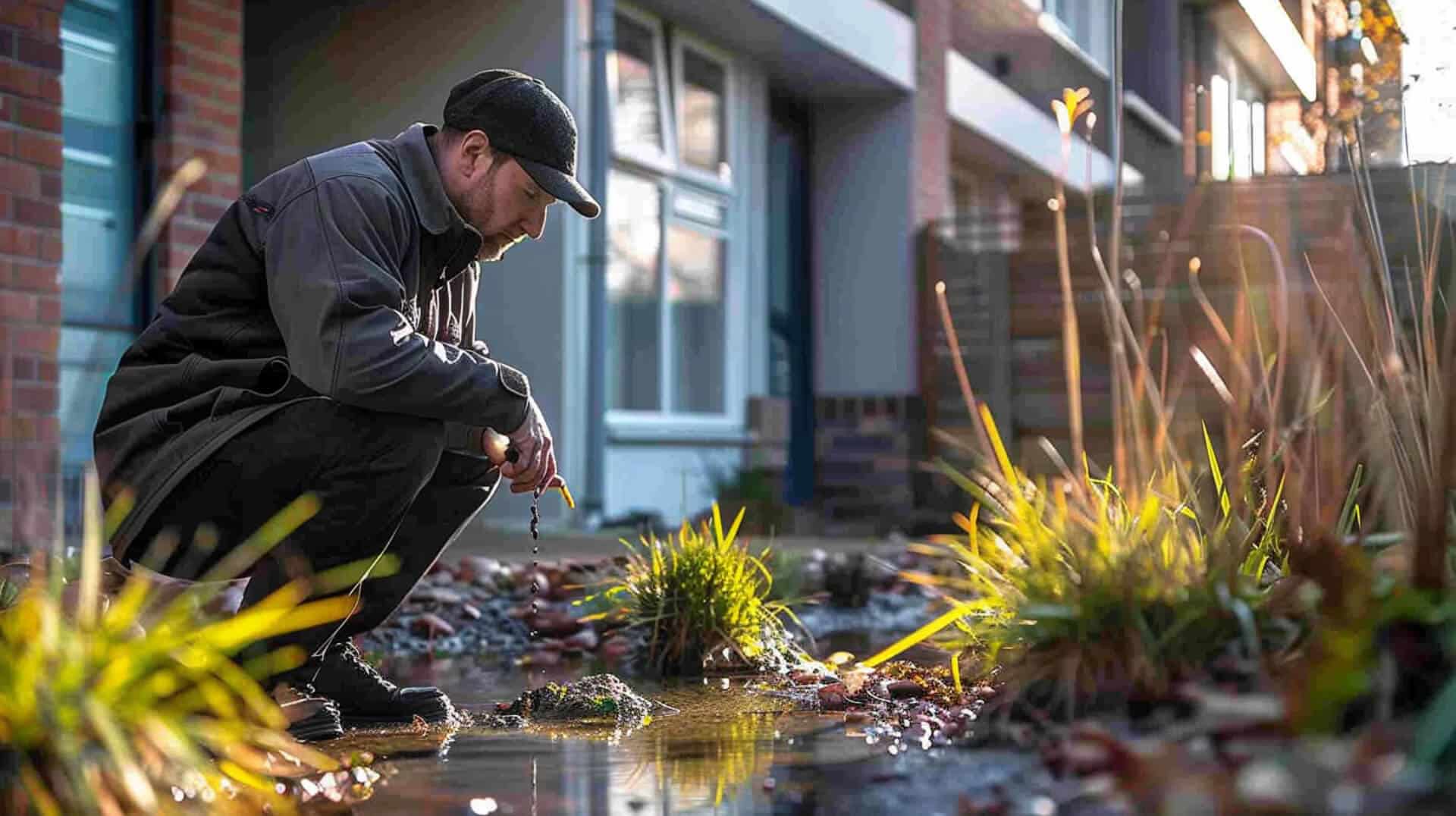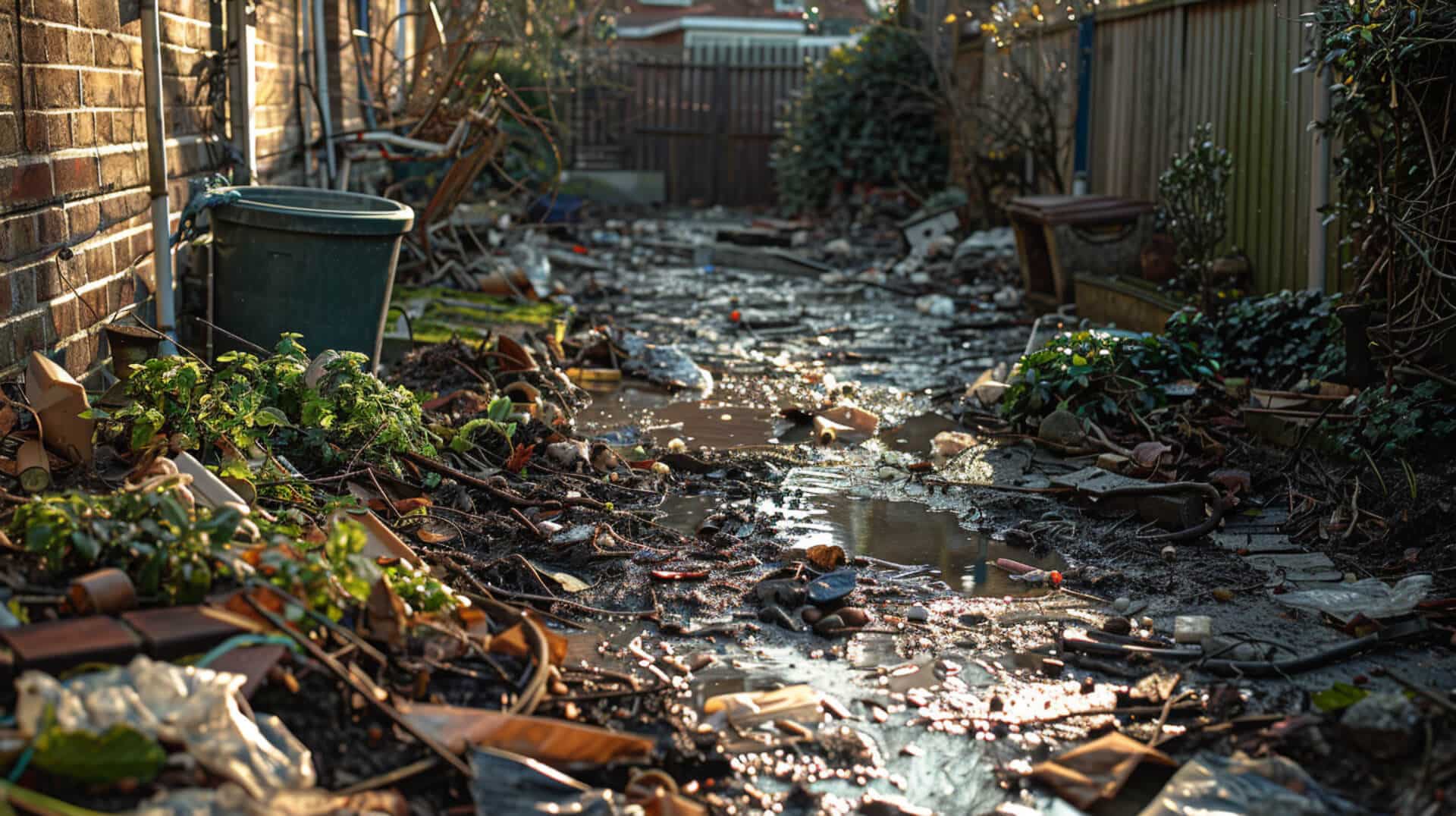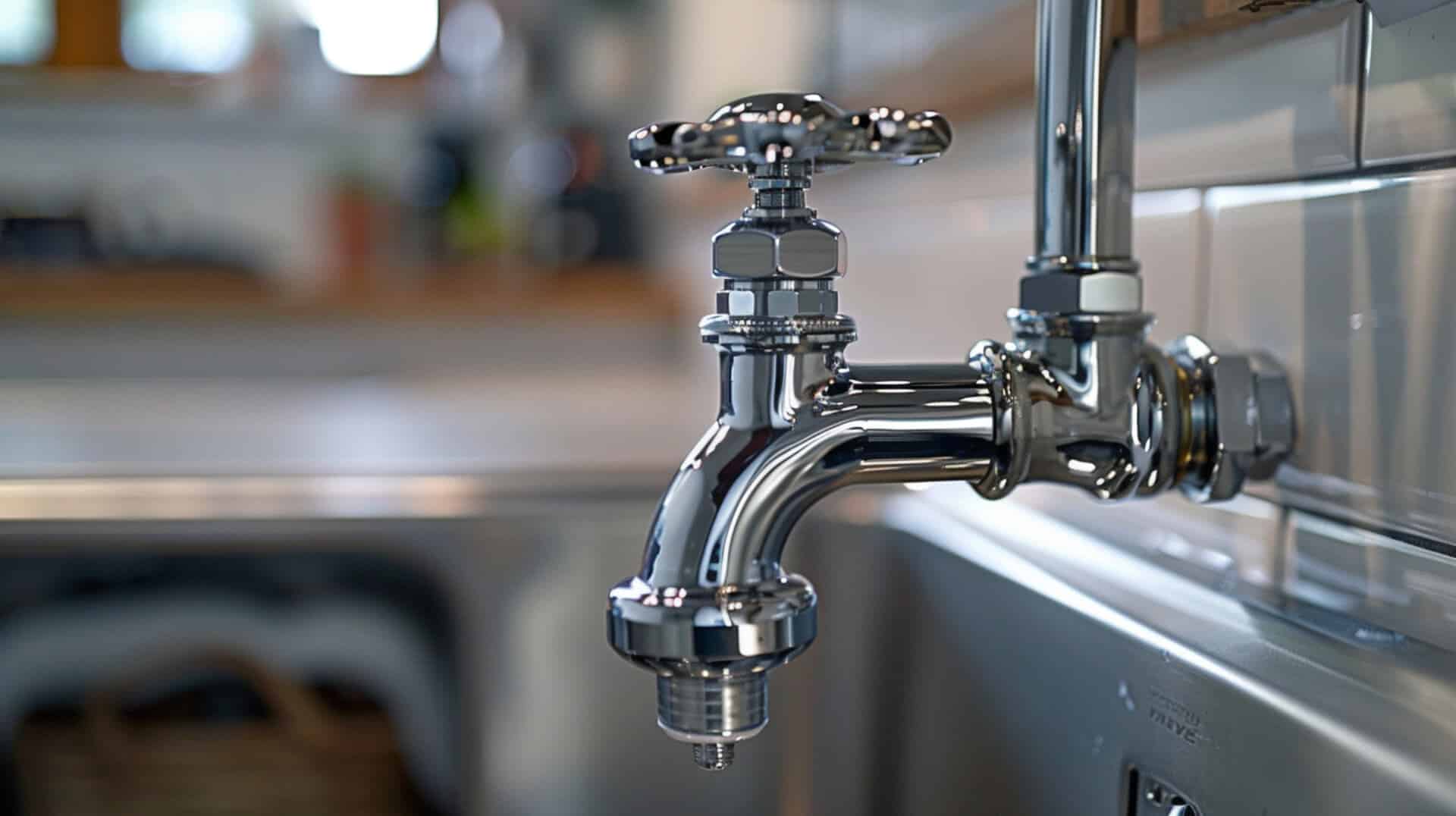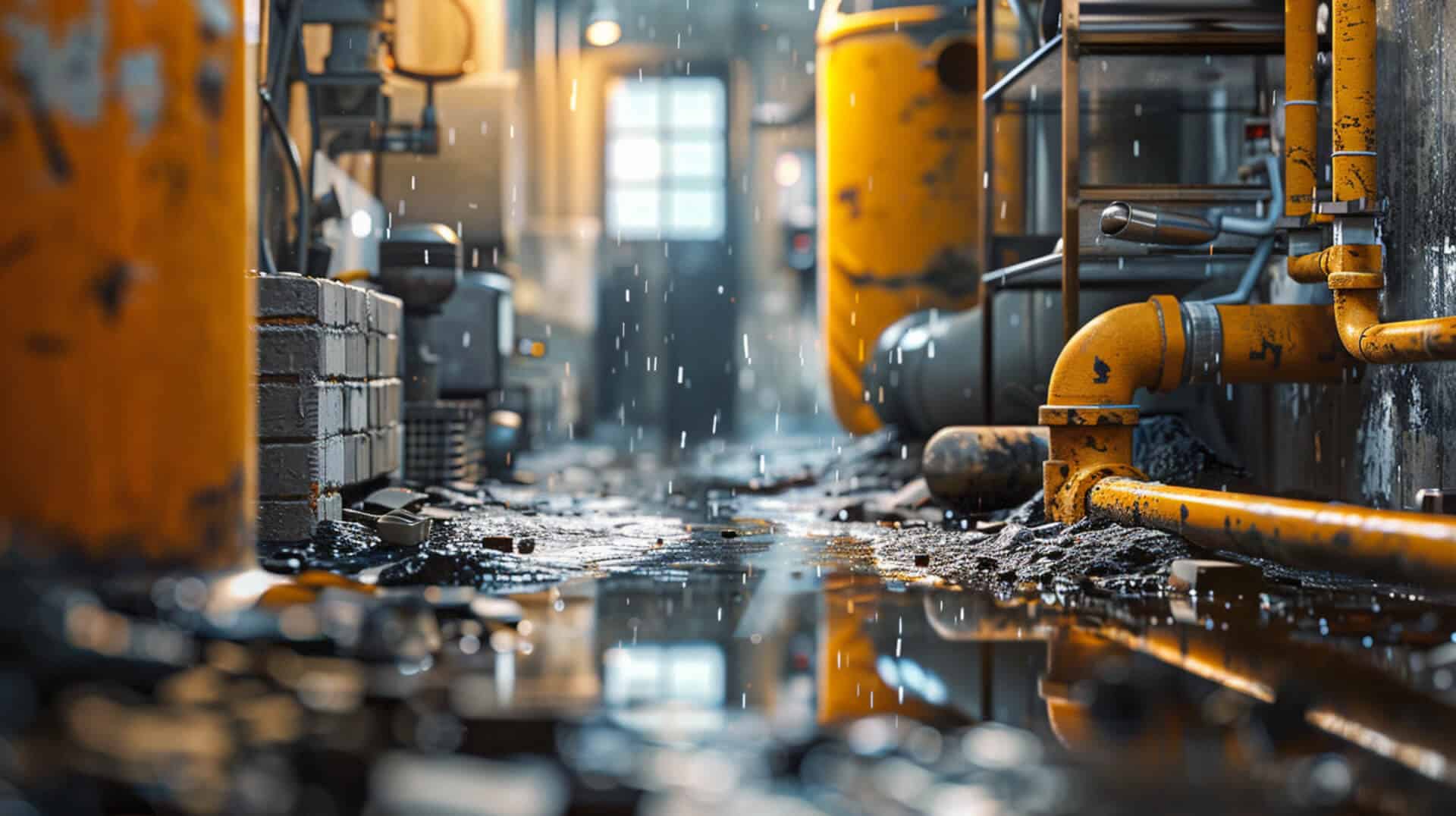 What Is Drain Sediment And Debris Analysis
What Is Drain Sediment And Debris Analysis
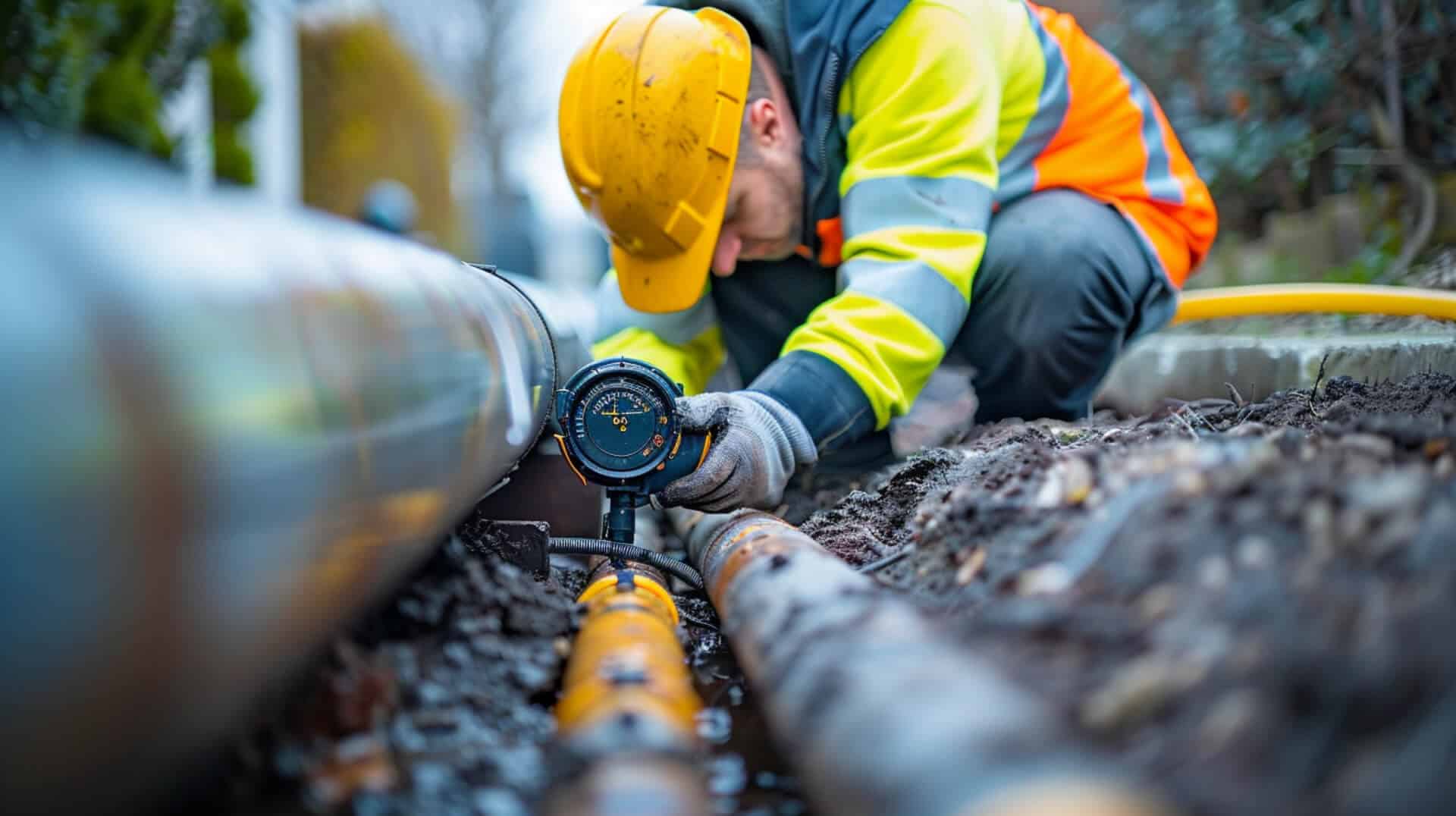
Introduction to Drain Sediment and Debris Analysis
Understanding the composition and impact of sediment and debris in plumbing systems is essential for maintaining the efficiency and safety of property infrastructure. Drain sediment and debris analysis is a critical process that involves examining the materials that accumulate in drainage systems, which can range from natural soil and mineral deposits to man-made waste and by-products.
What Constitutes Drain Sediment and Debris?
Drain sediment and debris encompass a variety of materials, including rust, limescale, organic matter, and construction debris. These substances can originate from multiple sources, such as corroding pipes, hard water, or environmental runoff, and they often converge in the plumbing systems of residential and commercial properties.
The Importance of Sediment and Debris Analysis
For property owners, business owners, and facility managers, analysing the sediment and debris in plumbing systems is crucial. It helps prevent blockages, reduces the risk of water contamination, and extends the lifespan of the plumbing infrastructure. Regular analysis can also preempt costly repairs and ensure compliance with environmental regulations.
Impact on Plumbing Efficiency and Safety
The accumulation of sediment and debris can lead to reduced water flow, increased pressure on pipes, and heightened wear and tear on system components. Over time, this can compromise the integrity of the plumbing system, leading to leaks, bursts, and potential health hazards due to bacterial growth.
Gaining Insight from Drain Sediment and Debris Analysis
By delving into the intricacies of drain sediment and debris analysis, you can gain valuable insights into the health of your plumbing system. This knowledge equips you with the tools to implement effective maintenance strategies, ensuring the longevity and reliability of your property’s drainage infrastructure.
Understanding the Composition of Drain Sediment and Debris
When you’re dealing with drain sediment and debris, it’s essential to recognise the variety of materials that can accumulate in your plumbing systems. These substances can range from organic matter, like leaves and twigs, to inorganic materials such as rust and limescale. The composition of these sediments can significantly affect the functionality and longevity of your plumbing.
Common Types of Sediment in Drains
The most frequently encountered types of sediment include:
- Rust: Often found in older pipes, rust can flake off and accumulate, causing blockages.
- Limescale: Hard water is a common culprit for limescale buildup, which can narrow pipes and reduce water flow.
- Organic Matter: Leaves, twigs, and other natural debris can enter drains and cause clogs, especially after heavy rainfall.
Variability Across Environments
The composition of debris in drains can vary widely depending on the environment. Urban areas might see more construction materials like sand and cement, while rural locations may deal with more organic matter due to vegetation.
Significance of Grain Size Diversity
Grain size matters because it influences the sediment’s mobility and the potential for blockages. Fine grains, for example, can easily be carried by water and lead to siltation, while larger particles might settle and accumulate more quickly.
Environmental Factors and Sediment Composition
Environmental factors play a pivotal role in determining the composition of sediment and debris. Factors such as soil type, vegetation cover, and human activity can all contribute to the types and amounts of materials entering the drainage system. Understanding these factors is crucial for effective sediment management and prevention strategies.
The Impact of Sediment and Debris on Plumbing Systems
Understanding how sediment and debris affect plumbing systems is crucial for maintaining the functionality and safety of these essential infrastructures. Accumulations of sediment can lead to a range of issues that not only inconvenience property owners but also pose significant health risks and long-term damage to plumbing components.
Consequences of Blockages in Plumbing
Sediment and debris can lead to blockages by accumulating in pipes and restricting water flow. This can result in:
- Reduced water pressure, affecting the efficiency of water-dependent appliances.
- Increased risk of burst pipes due to pressure buildup behind blockages.
- Potential for overflows and water damage if blockages prevent proper drainage.
Effects on Water Quality and Health
Sediment accumulation can negatively impact water quality by:
- Providing a habitat for bacteria, including Legionella, which can lead to health issues.
- Introducing contaminants into the water supply, affecting the safety of drinking water.
Long-Term Damage from Sediment Buildup
Unchecked sediment buildup can cause long-term damage to plumbing systems, including:
- Accelerated wear and tear on pipes and fixtures due to abrasive particles.
- Increased maintenance costs and the likelihood of needing premature replacements.
- Potential for chronic plumbing issues if sediment causes persistent blockages.
Wear and Tear of Plumbing Components
Sediment contributes to the wear and tear of plumbing components by:
- Causing erosion and corrosion within pipes, leading to leaks and structural failure.
- Damaging valves and seals, which can result in drips and reduced operational efficiency.
By addressing sediment and debris issues promptly, property owners can prevent these negative outcomes and ensure the longevity and reliability of their plumbing systems.
Techniques for Analysing Drain Sediment and Debris
Analysing the sediment and debris that accumulate in drains is a multifaceted process, employing various methods to accurately identify and quantify the materials present. These techniques are essential for diagnosing issues within plumbing systems and formulating effective management strategies.
Particle Counting Methods
Particle counting is a fundamental technique in sediment analysis. It involves:
- Manual Inspection: Using microscopes to visually count and categorise particles based on size and type.
- Automated Systems: Employing laser or imaging technologies to detect and quantify particles more efficiently.
Elemental Analysis for Debris Composition
Elemental analysis provides insights into the chemical makeup of debris. Techniques include:
- Spectroscopy: Utilising instruments like X-ray fluorescence (XRF) to identify the elemental composition.
- Chromatography: Separating chemical components to analyse the presence of specific elements.
Significance of Ferrous Density Testing
Ferrous density tests are crucial for:
- Assessing the concentration of ferrous (iron-based) particles, which can indicate corrosion or wear within the system.
- Helping to predict potential failures in plumbing components by identifying abnormal levels of metal wear.
Role of Magnetic and Optical Methods
Magnetic and optical methods enhance sediment analysis by:
- Magnetic Separation: Isolating ferrous particles for more detailed examination.
- Optical Characterization: Using light properties to determine particle shapes and sizes, which can inform the source and type of wear occurring.
These analytical techniques are integral to understanding the condition of plumbing systems and guiding maintenance decisions. By employing a combination of these methods, professionals can provide comprehensive assessments of sediment and debris, ensuring the longevity and safety of plumbing infrastructures.
Preventive Measures and Maintenance Strategies
Proactive maintenance and preventive strategies are key to mitigating the accumulation of sediment and debris in plumbing systems. Regular inspection and cleaning are foundational practices that help maintain the integrity and efficiency of these systems.
Regular Inspection and Cleaning
Routine checks can identify early signs of sediment buildup, allowing for timely intervention. Cleaning protocols, such as flushing and descaling, remove accumulations before they become problematic, ensuring that water flow remains unimpeded and the risk of blockages is minimised.
Benefits of Sediment Drain Philtres
The use of sediment drain philtres, such as the GREEN RHINO EnviroHorn, offers several advantages:
- Capture and Removal: These philtres effectively trap sediment and oil, preventing them from entering the plumbing system.
- Environmental Protection: By capturing potentially harmful materials, these philtres also safeguard the surrounding ecosystem.
- Reusability: Many sediment drain philtres are designed for multiple uses, making them a cost-effective solution.
Advanced Flushing Systems
Advanced flushing systems play a crucial role in:
- Sediment Removal: They efficiently clear out sediment buildup, maintaining clear pathways for water.
- Legionella Prevention: By removing stagnant water where bacteria can thrive, these systems help prevent the growth of Legionella and other harmful microorganisms.
Importance of Early Fault Detection
Early detection of faults within the plumbing system is vital for:
- Cost Savings: Addressing issues early can prevent expensive repairs and system downtime.
- System Longevity: Regular monitoring helps extend the lifespan of plumbing components by preventing damage from sediment and debris.
By implementing these strategies, property owners can ensure the continued functionality and safety of their plumbing systems, avoiding the inconvenience and potential hazards associated with sediment and debris accumulation.
Challenges in Drain Sediment and Debris Analysis
Accurate analysis of sediment and debris in plumbing systems is critical for maintaining infrastructure and ensuring environmental compliance. However, professionals in this field often encounter several challenges that can affect the reliability of their assessments.
Addressing False Positives and Negatives
One significant challenge is the occurrence of false positives and negatives in test results. False positives can lead to unnecessary maintenance actions, while false negatives may result in overlooked issues that could escalate into more severe problems. It is essential for analysts to:
- Use calibrated equipment to minimise errors.
- Implement quality control measures to verify results.
- Cross-reference findings with multiple testing methods to ensure accuracy.
Importance of Noise Reduction
Noise reduction is another critical aspect of sediment analysis. Excessive background noise in data can obscure true readings and lead to misinterpretation. Analysts must:
- Employ advanced filtering techniques to isolate relevant signals.
- Regularly service and maintain analytical instruments to prevent data interference.
- Train personnel in recognising and mitigating noise in datasets.
Systematic Sampling and Strategy
A systematic approach to sampling and analysis can overcome many of these challenges. This includes:
- Establishing a consistent sampling protocol to ensure comparability of results.
- Developing a strategic plan that outlines objectives, methods, and analysis techniques.
- Utilising a comprehensive strategy that integrates data from various sources for a holistic understanding.
By addressing these challenges with diligence and precision, professionals can provide accurate and actionable insights into the condition of plumbing systems, ultimately contributing to their longevity and reliability.
Environmental Considerations in Sediment and Debris Management
Effective management of sediment and debris is not only a matter of maintaining plumbing systems but also plays a significant role in protecting the environment. By implementing sustainable practices, property owners contribute to the preservation of local ecosystems.
Regulatory Compliance in Sediment Disposal
Property owners should be aware of regulations governing sediment disposal, which may include:
- Local Water Quality Standards: Ensuring that sediment does not contain contaminants that could harm water sources.
- Waste Management Regulations: Proper disposal of sediment and debris in accordance with municipal guidelines to prevent environmental pollution.
Sustainability in Sediment Analysis
Sustainability is a key consideration in sediment and debris management due to:
- The need to minimise the environmental footprint of maintenance activities.
- The importance of conserving water resources by preventing blockages and leaks that can result from sediment buildup.
Community Benefits of Sediment Management
Effective sediment management practices have broader benefits for the community, including:
- Preventing Waterway Pollution: By keeping sediment out of drains, the risk of contaminating rivers and lakes is reduced.
- Maintaining Public Health: Clean water systems are less likely to harbour bacteria and other pathogens, supporting overall community health.
By prioritising these environmental considerations, you ensure that sediment and debris management efforts are responsible, sustainable, and beneficial for both your property and the wider community.
Technological Advancements in Sediment and Debris Analysis
The field of sediment and debris analysis has seen significant technological advancements that have improved the precision and efficiency of these processes. These innovations are crucial for property owners, business owners, and facility managers who rely on accurate data to maintain their plumbing systems.
Recent Innovations in Sediment Analysis Techniques
Recent technological developments have enhanced sediment analysis, including:
- Automated Particle Counters: Devices that quickly quantify sediment particles, saving time and increasing accuracy.
- High-Resolution Imaging: Provides detailed visualisations of sediment samples, allowing for more nuanced analysis.
- Advanced Spectroscopy: Offers in-depth elemental analysis to identify the composition of debris accurately.
Systematic Improvements from New Methods
New methods in sediment analysis contribute to systematic improvements by:
- Standardising procedures, leading to more consistent and comparable results.
- Reducing human error through automation and advanced data processing.
- Enhancing the ability to monitor and respond to sediment issues in real-time.
Importance of Technology Adoption
Adopting these new technologies is essential for:
- Ensuring the accuracy of sediment and debris analysis.
- Streamlining maintenance schedules and reducing the likelihood of plumbing failures.
- Supporting proactive management of plumbing systems, which can lead to cost savings and extended equipment life.
Future Technologies in Sediment Management
Looking ahead, promising technologies for sediment and debris management include:
- Machine Learning Algorithms: To predict sediment buildup patterns and optimise cleaning schedules.
- Nanotechnology: For more precise filtration systems that can capture even the smallest particles.
- Internet of Things (IoT): Sensors that provide continuous monitoring and instant alerts about sediment levels.
By staying informed about and utilising these technological advancements, you can ensure the most effective management of sediment and debris in your plumbing systems.
Implementing a Systematic Approach to Sediment Analysis
Developing a systematic approach to sediment analysis is essential for property owners who wish to maintain the health and efficiency of their plumbing systems. A structured strategy not only aids in the early detection of potential issues but also enhances the overall reliability of the system.
Steps to Create a Sediment Analysis Strategy
To establish a comprehensive sediment analysis strategy, consider the following steps:
- Assessment of Current Conditions: Begin by evaluating the existing state of your plumbing system to identify any immediate concerns.
- Regular Monitoring: Implement a schedule for regular inspections and monitoring to track sediment levels over time.
- Selection of Analysis Techniques: Choose appropriate analytical methods, such as particle counting or elemental analysis, based on the specific needs of your system.
- Data Management: Organise and manage the data collected to identify trends and make informed decisions.
The Role of Early Fault Detection
Early fault detection is a cornerstone of a systematic approach because it allows for:
- Timely interventions that can prevent minor issues from escalating.
- Cost savings by avoiding extensive repairs or system downtime.
Enhancing System Reliability
A systematic approach improves plumbing system reliability by:
- Ensuring consistent water quality and flow.
- Extending the lifespan of plumbing components through proactive maintenance.
- Reducing the risk of unexpected failures and associated inconveniences.
By adhering to these guidelines, you can establish a robust sediment analysis programme that safeguards your plumbing infrastructure and contributes to the smooth operation of your property.
Selecting Professional Sediment and Debris Analysis Services
When choosing a professional service for drain sediment and debris analysis, property owners should consider several key factors to ensure comprehensive and accurate assessments.
Criteria for Choosing a Service Provider
You should look for providers that offer:
- Expertise in Elemental and Particle Analysis: A deep understanding of the types of sediment and debris that can accumulate in drains is crucial.
- Advanced Analytical Techniques: Services should employ the latest methods, such as spectroscopy and automated particle counting, for precise results.
- Comprehensive Reporting: Detailed reports that offer insights into the condition of your plumbing system and potential issues.
Conducting Professional Analysis
Professional services typically conduct sediment and debris analysis through:
- On-Site Sampling: Collecting samples directly from your plumbing system for in-lab analysis.
- Laboratory Testing: Utilising state-of-the-art equipment to identify the composition and concentration of sediment.
- Data Interpretation: Experts analyse the results to provide actionable insights and recommendations.
Importance of Specialised Expertise
Selecting a service with specialised expertise is important because:
- It ensures that the analysis is tailored to the specific needs of your property.
- It provides a higher level of accuracy, which is critical for effective maintenance and decision-making.
Maintenance Recommendations
In addition to analysis, professional services often offer:
- Customised Maintenance Plans: Based on the analysis results, experts can recommend a maintenance schedule tailored to your system’s needs.
- Preventive Strategies: Guidance on how to prevent future sediment and debris accumulation, saving you time and money in the long run.
By carefully selecting a professional service for drain sediment and debris analysis, you ensure that your plumbing system is evaluated with precision, leading to informed maintenance decisions and improved system longevity.
Practical Examples and Real-World Applications of Sediment Analysis
Real-world applications provide valuable insights into the effectiveness of sediment analysis and the implementation of preventive measures. These examples highlight the tangible benefits of proactive sediment management in plumbing systems.
Case Studies Demonstrating the Importance of Sediment Analysis
Case studies from various industries have shown that regular sediment analysis can:
- Prevent costly breakdowns in plumbing systems by identifying issues before they escalate.
- Enhance water quality and safety for users by detecting potential contaminants early.
- Save on long-term maintenance costs through informed decision-making and strategic planning.
Effectiveness of Preventive Measures and Maintenance Strategies
Practical examples have illustrated the success of preventive measures, such as:
- The use of sediment philtres, like the GREEN RHINO EnviroHorn, which have been effective in reducing the accumulation of debris in drains.
- Scheduled flushing systems that have maintained the integrity of plumbing systems and prevented Legionella outbreaks.
Understanding Impact Through Real-World Scenarios
Real-world scenarios are crucial for understanding the impact of sediment on plumbing systems because they:
- Provide context to the challenges faced by property managers in maintaining infrastructure.
- Offer insights into the practical application and outcomes of sediment analysis techniques.
Appreciating Technological Advancements
Advancements in technology, as demonstrated in real-world applications, have:
- Improved the accuracy and efficiency of sediment analysis, leading to better-informed maintenance schedules.
- Enabled the development of more sophisticated monitoring tools that can predict and prevent issues in plumbing systems.
By examining these real-world applications, property owners can better appreciate the value of sediment analysis and the importance of incorporating advanced technologies and preventive strategies into their maintenance routines.
Key Takeaways in Drain Sediment and Debris Analysis
Understanding drain sediment and debris analysis is essential for maintaining the health and efficiency of plumbing systems. The key takeaways include the importance of recognising the types of sediment that can accumulate, the impact this can have on plumbing infrastructure, and the methods available for analysis and prevention.
Proactive Management of Sediment and Debris
A proactive approach to managing sediment and debris in plumbing systems is crucial. It helps to:
- Prevent blockages and maintain optimal water flow.
- Extend the lifespan of plumbing components.
- Reduce the risk of costly repairs and maintenance.
Benefits for Property and Business Owners
By implementing the strategies discussed, property owners, business owners, and facility managers can benefit from:
- Improved system reliability and safety.
- Enhanced water quality and environmental compliance.
- Cost savings through preventive maintenance.
Future Considerations in Sediment Analysis
Looking forward, it is important to consider:
- The ongoing development of new technologies for sediment analysis.
- The integration of sustainable practices in sediment management.
- The adaptation of maintenance strategies to evolving regulatory standards.
By keeping these considerations in mind, stakeholders can ensure that their approach to sediment and debris management remains effective and responsive to future challenges.

